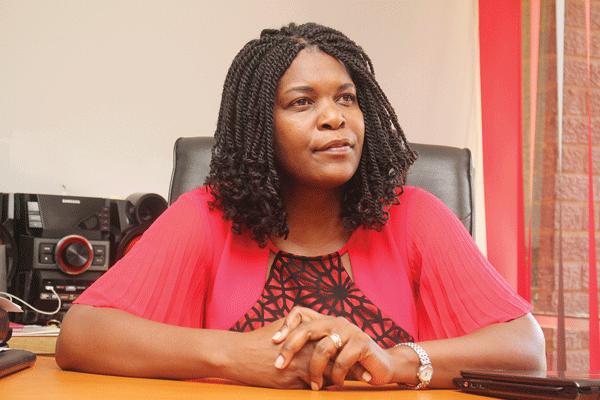THE number of female professionals landing executive positions in the manufacturing sector rose by a huge margin in the past year, a Confederation of Zimbabwe Industries (CZI) survey has revealed.
In its Manufacturing Sector Survey released yesterday, CZI said the number of female CEOs rose by 8,45 percentage points to 13,45 percent this year, from only five percent last year, with about half the lady CEOs taking charge of the country’s biggest corporations.

Large corporations are defined as those employing 100 workers and above, according to the report, which polled 250 executives.
Capacity utilisation in the country’s manufacturing industry dropped to 45,1 percent this year, from 47,4 percent in 2016, according to the report, which said this figure was 38 percent among firms headed by female CEOs.
The survey did not explain why capacity utilisation in female headed firms lagged behind the national average, but showed firms in Matabeleland as making the greatest strides in empowering females to take up CEO roles in big corporations, followed by firms in Mashonaland and Manicaland with 18 percent, 12 percent and nine percent respectively.
There has been a push towards encouraging females to move into leadership roles across all spheres of society, including in the manufacturing industry.
While the rate at which females have been moving into executive roles has still been low compared to developments in advanced countries, Zimbabwe has witnessed the promotion of several female CEOs, including Cairns Foods managing director (MD), Nancy Guzha, BAT MD, Clarah Mlambo and Grace Muradzikwa, the MD at the Zimbabwe Stock Exchange listed NicozDiamond.
The CZI, however, expressed concern at the high levels of short term work given to female workers in the manufacturing industry.
“From the previous surveys, the percentage of companies headed by a female CEO hovered around five percent while this year’s survey shows 13,45 percent being female headed,” said the report, which also revealed high levels of productivity by female employees compared to males.
It said female employees were unlikely to be absent from work compared to males, while noting that there had been a corresponding sharp rise in corporations owned by females.
“Female CEOs are more dominant in large companies with 47 percent of the female headed companies being large companies employing 100 or more employees. On average, the manufacturing sector employs 20 percent females compared to males. Women are employed more as non-permanent employees compared to their male counterparts whose majority is employed as full time despite 70 percent of respondents indicating that a larger proportion of absenteeism is among male employees.
The results show that 34 percent of female employees were employed as full time in 2015. This proportion, however, improved in 2017 where 39 percent of females are employed as full time. However, of the total males employed more than 50 percent are employed on a permanent basis,” the report added.
It said females workers were generally employed in sectors such as foodstuffs, textiles and ginning, clothing and footwear as well as other manufactured products.
The least number of female employers are in the chemical sector and metal and metal products.
“Of the companies with female ownership, the average percentage ownership of women is 29 percent. Women have more stakes in medium sized firms compared to large firms. Of the companies that retrenched in 2015, 59 percent of the retrenchments were for male employees while the remainder were females. In 2016, the proportion of males retrenched was 53 percent against that of females at 47 percent,” the CZI said.
The report said 92 percent of respondents said they had a safety and health plan at their workplace. “Forty six percent of respondents indicated that the plan includes reproductive health, 68 percent of total respondents indicated that the plan includes protection from all forms of violence (verbal, physical, sexual harassment) and 65 percent indicated that it includes HIV/AIDS counselling and treatment. Forty percent of the respondents indicated that there has been deliberate effort to contract female input providers,” said the CZI.

